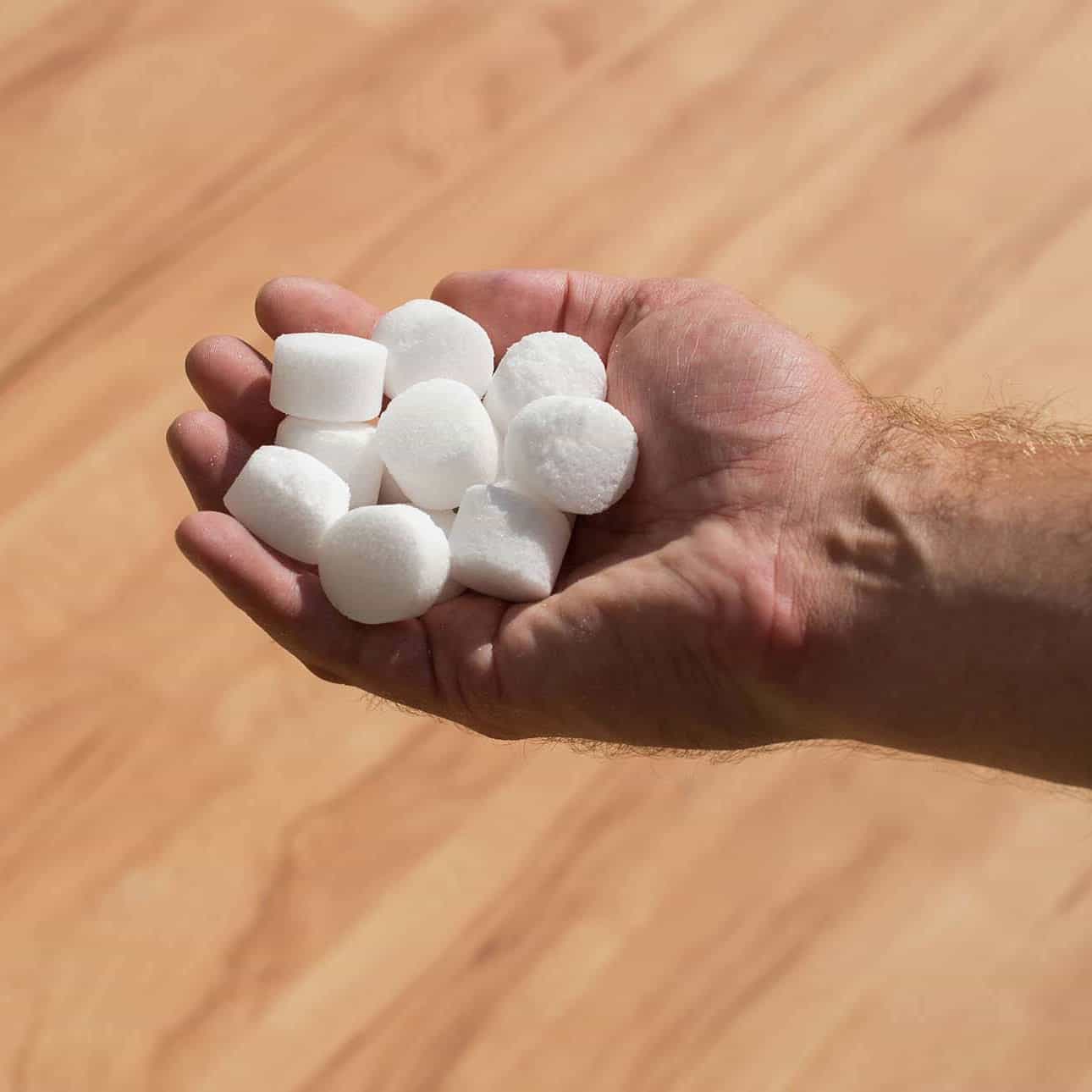What Do You Do if Your Water Softener Failed?
About Water Softeners

A water softener is one of those appliances that you don’t think much about. Besides the occasional bag of salt there isn’t much you need to do. All salt based water softeners work the same way, regardless of the number of tanks they may have. Cold “hard” water flows into a resin tank, the resin tank contains resin beads that the “hard” water minerals stick to as they pass through the tank, allowing only “soft” water to pass through the system. Eventually, the resin beads can no longer hold any more minerals and need to be cleaned. On a preset schedule, the water softener will “recharge,” meaning that the flow of incoming fresh water is stopped while salt water from the brine tank is used to “clean” the resin beads by dissolving the accumulated minerals on the beads and flushing them down the drain. (This process is called a system “recharge” or sometimes a system “regeneration”, both simply mean that the resin beads are “cleaned” by the salt water in your brine tank and can go back to work catching the “hard” water minerals)
How Do You Know Your System Has Failed?
So how do you know if it’s doing what it’s supposed to be doing? Water softener failure can come in a few different forms, some being much more devastating than others. Most of the time when a water softener fails it stops softening the water. When this happens you’ll notice that your dishes are cloudy or that it’s taking a lot more soap to suds up and get things clean. You also may notice that you are not putting as much salt in the brine tank as often you used to. That’s a sure sign things are not right with your water softener system.
Troubleshooting your water softener system:
There are a number of things you can do to check your system before you call Z PLUMBERZ. Keep in mind that there are a lot of possible causes for water softener failures, these troubleshooting “tips” might help you solve the problem on your own (Note, softeners over 20 years old are almost impossible to fix yourself, in most cases even the trained professionals at Z PLUMBERZ won’t be able to. More than likely you will need a new unit depending on what failed in your old one):
Step One, if you suspect that you are not getting “soft” water you should check the system control settings. Most softener systems have an electronic control system, it allows you to set the time and duration of the “backwash” cycle. (..that’s the period that the softener takes salt water from the brine tank and “washes” the resin beads clean, it kind of “recharges” them so they can absorb “hard” water minerals again) So before you tear apart your softener, check that you have electrical power to the unit and that the clock timer is set properly. The best time to “recharge” the system is in the early morning, when no one is using water. Also be sure to check the “Hardness Setting” (not all units have this feature), hardness can vary under certain conditions and especially with well water systems. If all is satisfactory with the control unit move on to step two.
Step Two, it’s now time to check for problems in the salt supply tank that feeds the unit. Salt will sometimes “bridge” in the salt tank, when that happens salt is no longer being dissolved in the brine tank, which means the resin beads are not getting cleaned thoroughly which results in “hard” water flowing into your plumbing system. You can take a broom handle and push it into the salt until you hit the bottom of the tank, do this a couple of times around the center of the tank. You will know if you hit a salt “bridge” or a “dome” as the salt will cave in on itself. If you do encounter a salt “bridge or dome” you have probably solved your problem. Wait a day or two to see if your water is now “soft.”
If there was no “bridging or doming” of the salt, you should empty the brine tank of all salt, paying close attention when you get to the bottom of the tank. In a normally functioning system you should only find a little dirt and grime at the bottom of the tank. If you find a mushy substance instead, that could be the source of the problem. More than likely that “mush” is salt that has not dissolved completely, when that happens it can clog the intake system and reduce the salt needed to clean the resin bead completely. If that happens you will not have “soft” water. You can remove and discard the “mush”, sometimes you can dissolve it in a pail of hot water and pour it right back into the brine tank, after all it is salt and once dissolved completely will work fine in the softener. After cleaning the brine tank and removing the “mush,” be sure you cleaned the brine “pick up tube” too. That is the tube that pulls the salt brine from the tank and sends it to the resin tank. If that tube is plugged with “mush,” no brine will be picked up to wash the resin clean. Once you’re sure the brine tank is clean, put a couple of bags of salt back into the tank, then wait a couple of days to see if you now have “soft” water. If you don’t go to step three.
Step Three, it might be time to give the resin bed a good cleaning, you’ll have to follow the manufacturer’s directions for your specific unit but it might be worth doing this if you are able to. You will need to purchase a resin cleaner at a local water softener dealer or hardware store. (If you have iron in your water, be sure to get a cleaner that is designed for water that contains traces of iron) Clean resin is very important for the proper operation of your water softener. Follow the directions on the resin cleaner bottle and those of your unit’s manufacturer. If you still don’t have “soft” water after completing steps one through three, proceed to step four.
Step Four, the last major thing you can do is to clean the internal workings of the softener unit, this is not something you should attempt unless you are comfortable working around electricity, gears, timers and pumps. Be sure to follow the manufacturer’s instructions for servicing your softener; exercise extreme caution when working with water and electricity. Now might be a good time to call PLUMBERZ Toll Free at 800-654-1300 24 hours a day, every day with no overtime charges ever!
Z PLUMBERZ Are Professionals
We are fully licensed and insured for all of your plumbing, water, sewer and drain needs. Our technicians are clean-cut, polite, friendly, arrive on-time and are background and drug tested for your peace of mind. We operate 24 hours a day, 7 days a week and we never charge extra for nights, weekends or holidays…EVER! For all of our work you are assured of option pricing; you will know the repair options we suggest and the price of each option BEFORE we do any work. You pick and approve the option you like best, only then do we do the work.


